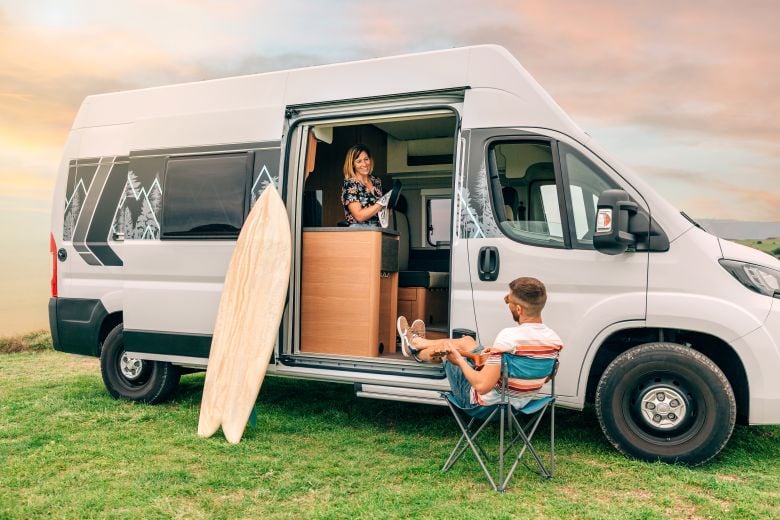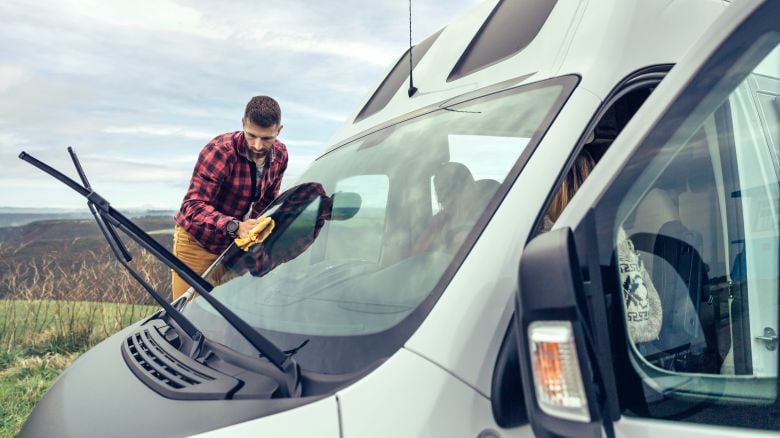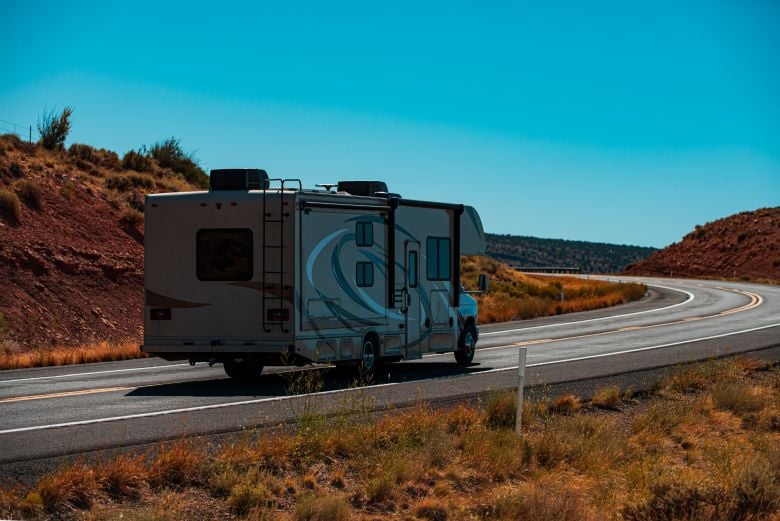
Is Your RV Ready for Spring Road Trips? Prep with This RV Maintenance Checklist
- Vehicle Maintenance
- PEAK
- May 7, 2025
Spring is here, which means one thing: road trip season!
Spring is here, which means one thing: road trip season! After a long winter, you'll need to prep your RV before hitting the road. This spring RV maintenance checklist covers all the essentials you'll need to stay safe and avoid unwelcome surprises during your RV adventure.


Begin with an exterior inspection
Winter is harsh, even if you've stored your RV in a garage. Start the spring season by doing a careful check of your RV's exterior:
- Inspect the roof: With the help of a sturdy ladder, carefully check your roof for cracks, gaps, and wear. Pay extra attention to the seals around your skylights and vents, and close any gaps with a sealant that's specially formulated for RVs. You can find this at your favorite hardware store or automotive retailer.
- Examine the body: Look for warping, peeling paint, and cracks, especially around corners, seams, windows, moldings, and panels. Fix any problems you find right away: little issues can turn into big ones, especially if water infiltration is the culprit.
- Wash and wax: Give your RV some TLC with a good scrub, and make sure to wax your vehicle to help protect it from UV rays, pollen, dust, dirt, and all kinds of other debris.
Do a mechanical and maintenance checkup
Next, you'll want to make sure your RV is safe, tuned up, and ready for the road. Here's what to look at:
- Tires: Check tread depth and do a tire rotation if you're due. Make sure all tires are properly pressurized according to the specs listed in your owner's manual. Also, check for dry rot, which will show up as cracks in the tire treads or sidewalls. Replace any affected tires.
- Brakes: Perform a quick visual inspection of your brake pads, making sure they have at least a quarter of an inch of friction material. If your brakes seem spongy when you press down on the pedal, you might have air in your brake lines. You'll need to get that fixed right away.
- Oil and fluids: Consult your service records to see what's due and perform checks of your engine oil, coolant levels, brake fluid, transmission fluid, and power steering fluid as needed. If your RV runs on diesel fuel, stock up on PEAK BlueDEF Platinum to protect your engine and keep emissions at bay.
- Batteries, power supplies, and appliances: Make sure all batteries, generators, solar panels, and other power sources are working properly. Test your fridge, HVAC system, wastewater system, and electrical system to make sure they're all in ship shape.
- Lighting: Test your headlights, brake lights, reverse lights, and turn signals. If you tow a trailer, check its signals too. Replace any malfunctioning or burned-out lights with PEAK automotive lighting products.
- Wiper blades: Test your wiper blades on a wet windshield. If they chatter, skip, squeak, or leave streaks, it's time for new ones. Heavy-duty PEAK Transport wiper blades are perfect for RVing and off-roading.
Our DIY spring maintenance checklist and this primer on windshield wiper replacements explain these tasks and more in complete detail. If you want to do your spring RV maintenance yourself, it's the perfect partner.


Prep your RV's interior
Before hitting the road, you'll want to make sure your RV's interior is well-organized and clean. Start by deep-cleaning the interior, including your upholstery. Remove cobwebs, wipe down lighting fixtures, and purge your cabinets.
Do you have dry or canned goods left over from last year? Check to see if they've expired.
Are the windows dull and grimy? Use a streak-free glass cleaner to let the sunshine in.
Is clutter an issue? Get organized with bins, containers, and storage drawers.
Then, add these items to your spring RV maintenance checklist:
- Check for signs of pests: Notice any bite marks or bodily waste from rodents or small animals? You might have unintended guests. Use bait or traps to remove them, then deter them from returning by sealing gaps and openings and using safe but effective pest repellents.
- Look for mold and mildew: Check your walls, ceilings, windows, and cupboards for signs of mold or mildew. If you find it, treat it immediately — before it spreads.
- Peer into hidden corners: Grab a flashlight and check around your sinks, window seams, and vent openings. Mold, mildew, pests, and other problems can occur there too.
Audit your safety systems
After tuning up and cleaning out your RV, it's time to test its safety systems. Make sure to inspect:
- Propane connections: Check your propane hoses and connections to make sure they didn't crack during the cold weather. Ideally, you should replace your propane hoses every two or three years.
- Do the soap test: Propane leaks can be deadly. Moisten propane line connections with soapy water. If bubbles froth up, you might have a leak that will require immediate fixing.
- Fire extinguishers: Make sure your fire extinguisher is intact and ready for emergencies. Check the gauge: is it still green? If not, get a new extinguisher. Also, make sure your extinguisher hasn't expired. If in doubt, replace it.
- Detectors: Put in fresh batteries and test your propane leak, smoke, and carbon monoxide detectors to make sure they're working.


Stock up on road trip essentials
By now, your RV will be pretty close to ready for the road. To wrap things up, make sure you've got all the comfort accessories and emergency supplies you might need:
- Top up your emergency kit: A roadside emergency kit can be a literal lifesaver. Must-haves include ready-to-eat food, drinking water, a first aid kit, emergency blankets, road flares or reflective triangles, GPS device, spare cell phone and charger, reflective safety vest, water purification tablets, a whistle, and extra supplies of prescription medications.
- Pack your weather gear: Rain slickers or ponchos, waterproof matches, a foldable shovel, sand ladders, and wood planks can all come in handy if bad weather strikes.
- Stash a tool kit: Make sure you have a utility knife, screwdriver and wrench sets, duct tape, and pliers available to perform quick fixes on the go.
- Add portable lighting: Supplement your RV's interior lighting with rechargeable lanterns and durable flashlights. This will help conserve your RV's battery and give you extra options and mobility in the dark.
- Restock your accessories: Stock up on rechargeable or disposable batteries, light bulbs, fuses, cleaning products, and over-the-counter pain relievers. You don't want to be off-grid without them.
Our ultimate road trip checklist contains more details about the supplies, documents, and emergency gear you should have on hand for any road trip. Use it as a cross reference as you restock your RV for spring.
Add PEAK performance to your spring RV checklist
Last but not least, remember that PEAK products make a perfect addition to any RV road trip checklist:
- Grab an extra jug or two of Bug Cleaner windshield wash to keep grime, sap, and insects off your windshield as you explore off-road.
- Pack some PEAK RV & Marine antifreeze for your vehicle's plumbing system.
- Protect your engine with PEAK Titanium coolant, powered by proprietary chemical technologies that clean, protect, and inhibit heat transfer.
Have a great RV adventure this spring!

